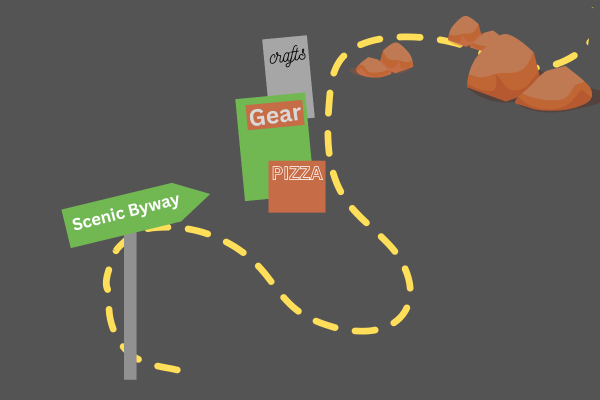There is so much about tourism best practices in news and politics lately. In theory they are meant to help tourist spots stick around environmentally, economically and culturally, but even those who preach them do not seem to quite agree on what they are.
Part of the problem is the idea of “best practices” is tinted by different agendas on the topic. Some “best practices” focus mostly on environmental sustainability, while others are more interested in keeping local businesses and cultures alive. The idea behind them, though, is consistent.
The United Nations World Tourism Organization defines sustainable tourism — or tourism following best practices — as tourism that “meets the needs of present tourists and host regions while protecting and enhancing opportunities for the future. Rather than being a type of product, it is an ethos that underpins all tourism activities.”
So if one were to consolidate a list of best practices, what would they be?
Here is a list compiled from visit Utah and other sources from all over the world:
- Walk down main street.
- Write or engage with online reviews.
- Go on an adventure with a guide.
- Talk about your trip with friends and family.
- Take a backroad.
- Shop local.
- Respect local culture.
These ideas can make a huge difference, especially if the tourists themselves are willing to adhere to them. Customers looking in main street windows, giving good online reviews and recommending places through word-of-mouth can all make or break seasonal tourist businesses.
What’s even better is hearing about what makes the community special: getting a local guide through the red rocks, hearing about the backroads and less popular trails and learning the area’s history and culture.
But tourism best practices are also great ideas for businesses, governments and communities involved in tourism.
What Do Tourism Best Practices Mean for Locals?
How can locals take these practices and use them to meet the needs of their businesses? Just flip them:
- Encourage tourism on main street.
- Read and respond to online reviews.
- Show your passion for the unique history, geology, and culture of where you live.
- Help family and friends have a reason to talk about you.
- Tell your guests and customers about things to do that are off the beaten path. Do things, so that you know what to tell them!
- Offer unique, local food or recreation items tourists cannot get anywhere else.
- Flaunt your local culture: the way you talk, the way you have fun, what you do for a living, how you find community.
Tourism, if done correctly, can be a sustainable business that betters the lives of both locals and tourists. Already, the tourist industry brings over 2,000 times as many visitors as locals to our small communities. It had better be something tourists and businesses can count on for generations.
– by Abbie Call
Feature image caption: Anyone can be involved in implementing tourism best practices, including but not limited to shopping local, and taking a scenic byway. From governments, to businesses, to tourists, to communities, we can all agree we would like tourism to stick around.

Abbie Call – Cannonville/Kirksville, Missouri
Abbie Call is a journalist and editor at The Byway. She graduated in 2022 with a bachelor’s degree in editing and publishing from Brigham Young University. Her favorite topics to write about include anything local, Utah’s megadrought, and mental health and meaning in life. In her free time, she enjoys reading, hanging out with family, quilting and hiking.
Find Abbie on Threads @abbieb.call or contact her at abbiecall27@gmail.com.

